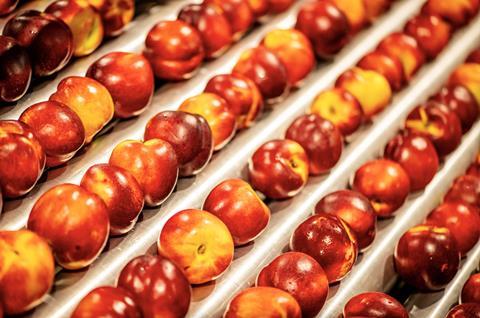The country saw mixed results this season, but exporters anticipate great opportunities in the future

With the last stonefruit shipments of the 2024 season on their way to overseas markets in Europe, the UK, the Middle East, Far East and the US, the South African industry is assessing a season of mixed results.
Exporters have already turned their focus to next season, with market access and expanding into new areas high on the agenda.
Although all stonefruit commodities were negatively affected by delays at Cape Town port, nectarines, peaches and apricots were the worst affected due to their relatively short shelf-life.
A 13 per cent increase in nectarine export volumes, combined with bigger fruit sizing, resulted in 43 per cent of the total volume ending up in the European market.
These greater volumes, combined with vessel delays, caused simultaneous arrivals in Europe which aggravated the situation as it disrupted market supply.
The plum export season ended below 12m cartons, around 11 per cent down on last season.
Exporters have said it would be another eight weeks until the last fruit is sold at overseas destinations and before the true results emerged. In the end, they still managed the season as best as they could.
Class 1 results, with specific reference to plums, were not too bad, but the logistical inefficiencies were clearly visible in terms of quality issues.
There were, however, also successes, which augur well for the future.
The campaign in the US is already considered a success, despite delays in some shipments. Icon Fruit’s Lohan Marais said that delays made the US campaign difficult, but sales went very well.
“We shipped varieties well-known to US consumers and the feedback has been very good. Despite the odds we delivered fruit in good condition and quality, and this sets the scene for future expansion.”
Annelie Hauman from Stems said the experience in the US market showed great promise for the future. “As we manage protocols and adapt to market requirements there is certainly great promise of growth in the future,” she outlined.
Both said promotional activities conducted by Hortgro along with US retailer, Cosco, showed promise.
South Africa and Chile are the only South Hemisphere countries supplying the US with stonefruit during the counter-season.
The South African export industry believes that it will be able to expand shipments in future.
“We also believe that prospects of South Africa remaining part of the US AGOA agreement for the time being will assist us in developing a good export programme,” Marais confirmed.
South African exporters are also heartened by the process to open the Chinese market for South African stonefruit.
Since the pear access was completed, the process for avocado’s has moved much quicker. “We hope the same will happen for our stone fruit so we can start moving into the East on a broader basis,” said Hauman.
Both the development of the US and Chinese markets, and other markets in Asia, will provide alternatives to the South African export industry in the years ahead.
It is expected that in terms of both nectarines and plums, South African production will stabilise over the next few years, although additional growth of larger-sized nectarines is expected.
It is argued that this year’s plum crop did not reflect the true South African potential, although greater market access will be required in future.



